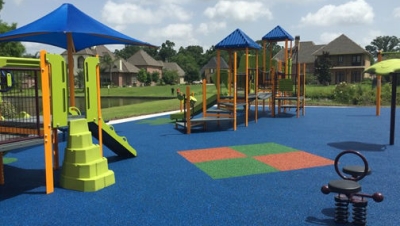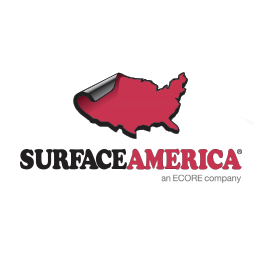Increase the longevity
What is the biggest misconception about maintaining unitary surfaces? Unitary surfaces include rubber mats, poured-in-place rubber, two-layer systems, and other surfacing products that remain secured during use. A lot of playground owners purchase unitary surfaces under the assumption that the products are maintenance-free. Some manufacturers and sales representatives may even hint that their products are maintenance-free.
There is no such thing as a playground product that is maintenance-free. Granted, unitary surfaces take less maintenance than loose-fill products, yet tiles may separate or come loose from the glue. In addition, high-traffic use areas may become worn and lose their cushiness. Edges may come loose. Weather, sun, vandals, and time also take their toll.
A main area of maintenance with unitary surfaces comes in reviewing and inspecting unitary surfaces for flaws or failure immediately after construction. Shoddy workmanship during the installation phase could include glue not being applied in a proper and acceptable manner. If a compacted sub-base is used but has not been properly installed and compacted, it could leave “dips” or low spots that cause poured-in-place and tile joints to rip or come apart.
Many times failure of unitary surfacing starts at the outside edge where poor workmanship or design has let the edge break loose. Once a tile or poured-in-place product begins to wear, children seem to be tempted to help the product deteriorate further by pulling or picking the areas apart. Once I went to a job site where tiles were moved from the playground entirely and were being used as bases for the baseball field nearby.
“To prolong the life expectancy and usefulness of your unitary surface be sure to develop and implement a rigid maintenance program.”
Another maintenance issue is the wear and weathering of unitary surfaces. Just as you must replace your worn rubber tires on your car, the same applies to rubber surfacing products. Every so often certain areas need to be replaced. Rubber is a soft material that can break down due to friction and movement. Many unitary surfacing manufacturers supply a protective coating of urethane that helps prolong the life of a rubber surfacing much like a seal coat on asphalt. Your maintenance arsenal may also need to include patch kits to repair and replace high-use areas such as under swings and slide exits.
Unitary surfaces may also need to be vacuumed or swept as part of a regularly scheduled maintenance program. They may also require soap and water with a scrub brush to remove gum, stains, or dirty areas. Do not use a cleaning solvent that is not approved by the manufacturer of your unitary product.
Unitary surfaces are more costly to install than their loose-fill counterparts. In return for the initial investment, they should last a long time. To prolong the life expectancy and usefulness of your unitary surface, be sure to develop and implement a rigid maintenance program.















